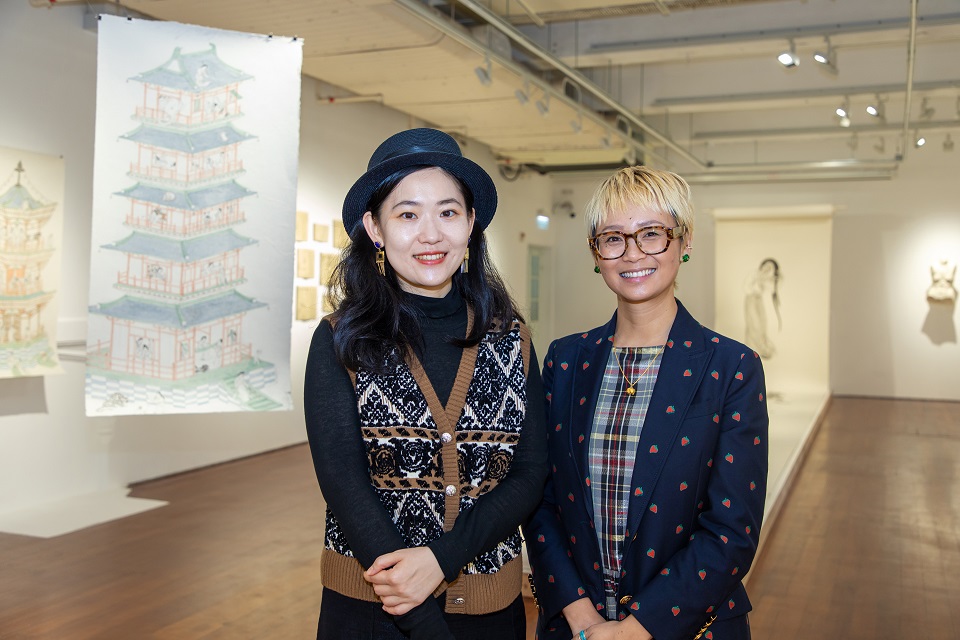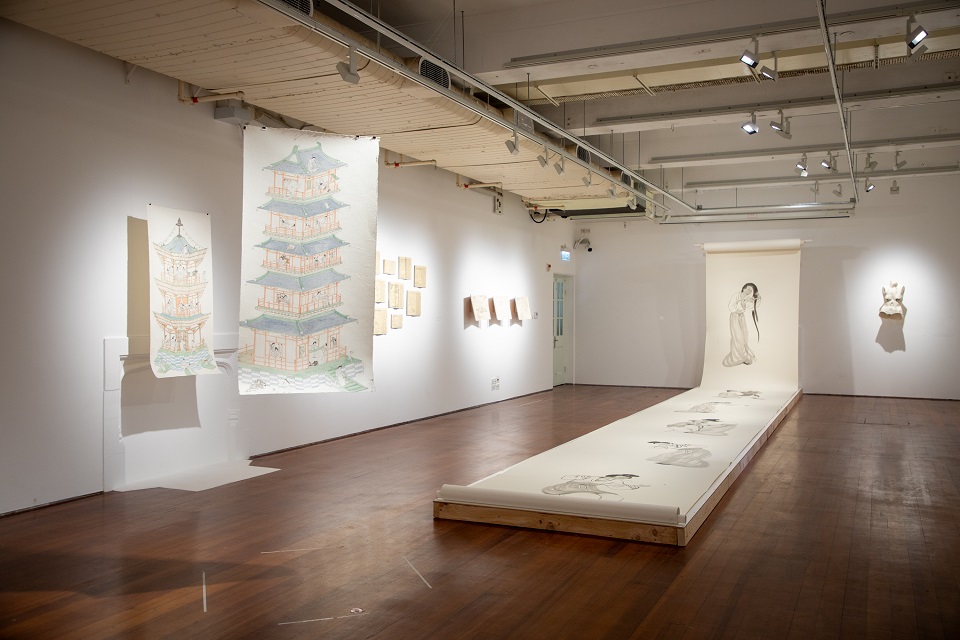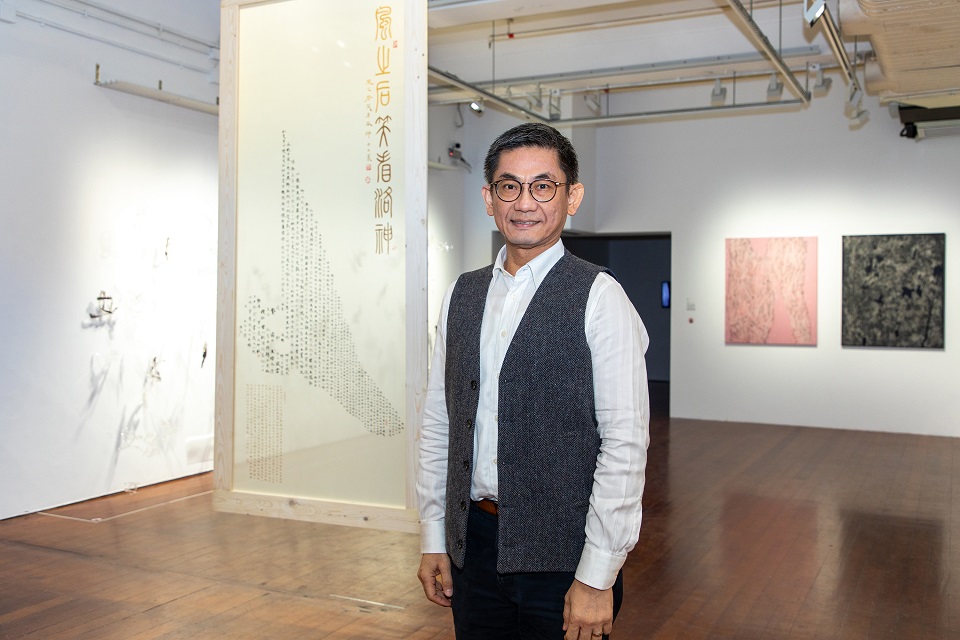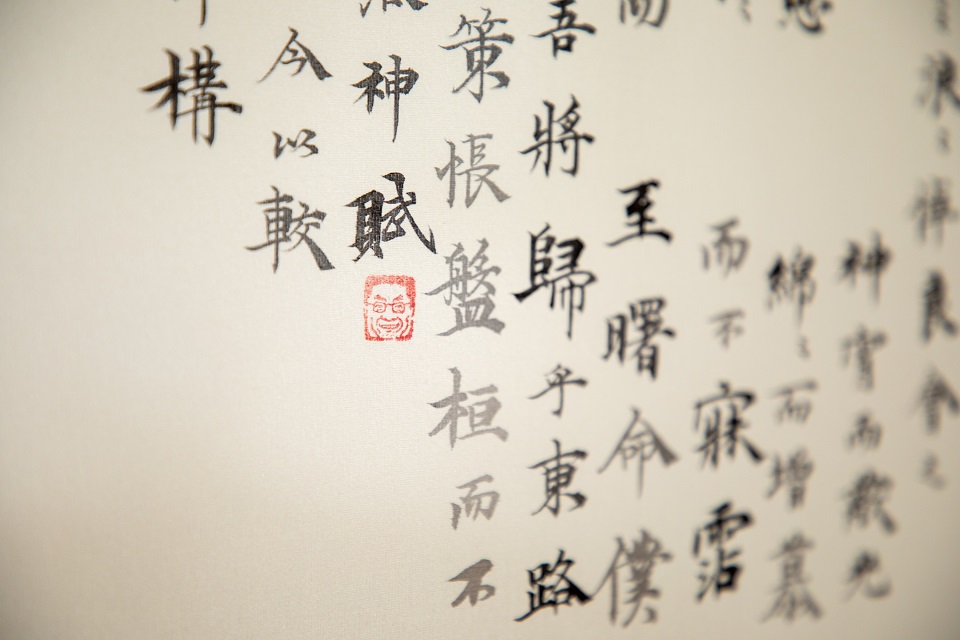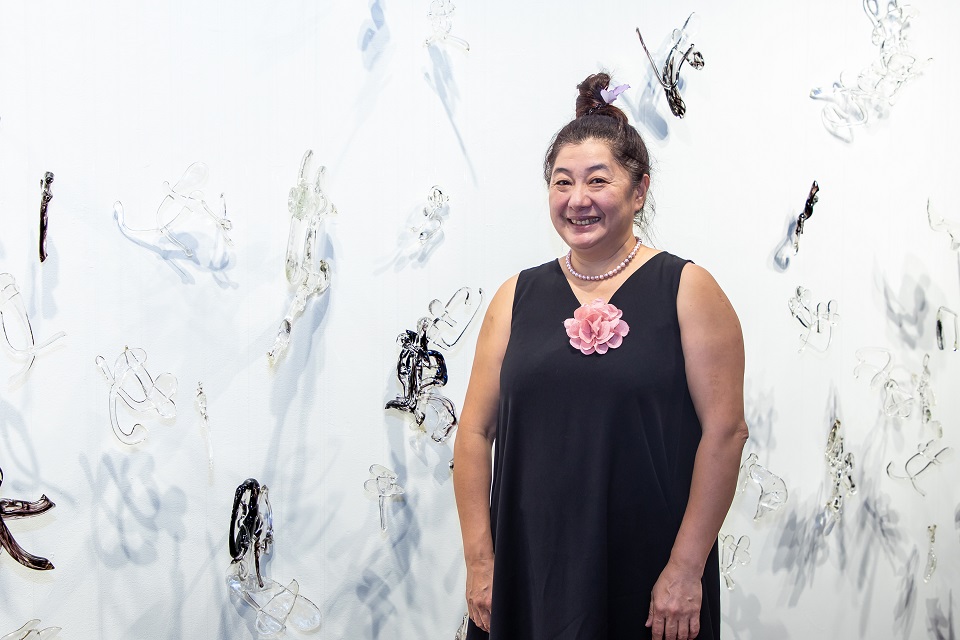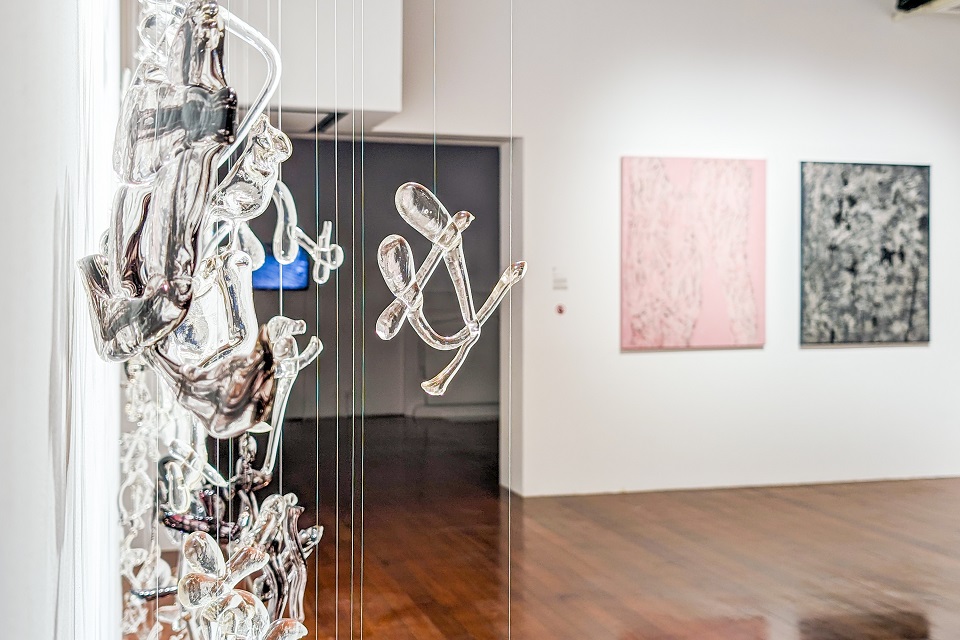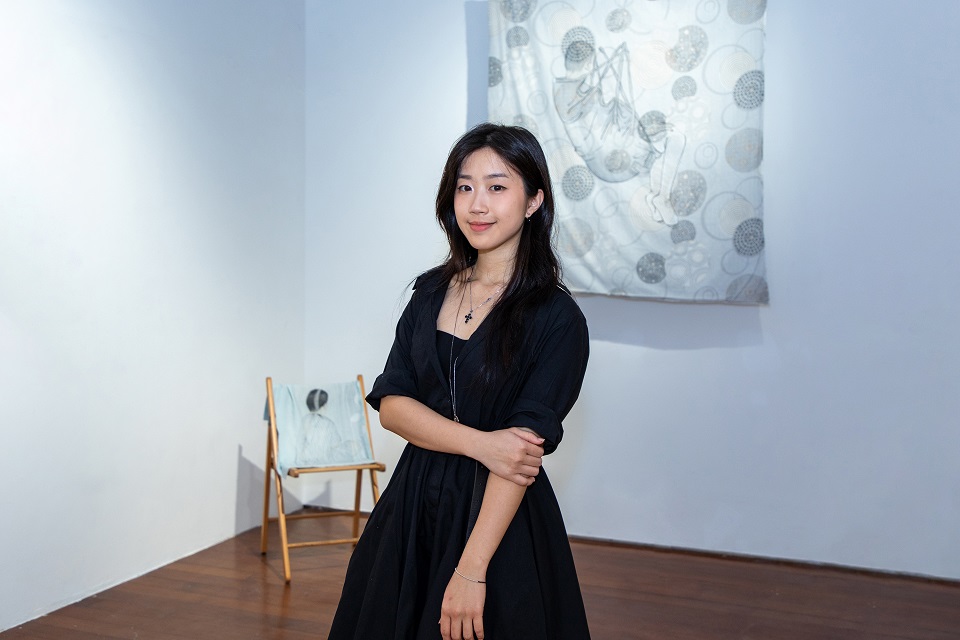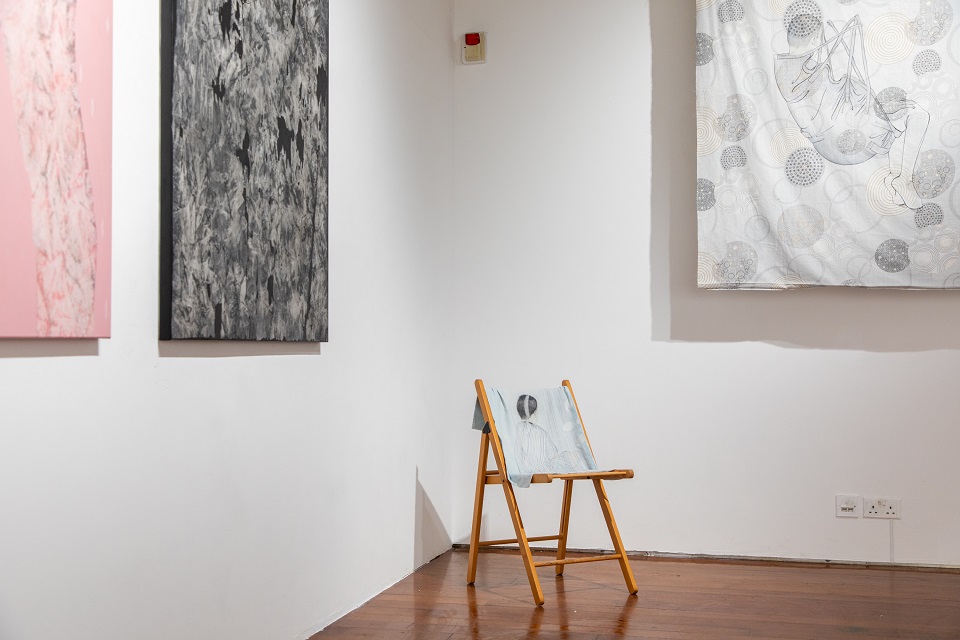Discover HKBU
When ink meets gender
28 Mar 2024
For the second year in a row, HKBU’s Academy of Visual Arts (AVA) under the School of Creative Arts has been selected as one of the Cultural Partners of Art Basel Hong Kong 2024. Alongside the HKBU representative booth at Art Basel Hong Kong 2024 in the Hong Kong Convention and Exhibition Centre from 26 to 30 March, AVA was invited to organise a parallel exhibition at the University’s Kai Tak Campus, which will run until 10 April.
Titled “Ink Subversion: Through Gender Lenses”, the Hong Kong Art Basel Parallel Exhibition is curated by AVA’s Research Assistant Professors Dr Wang Yizhou and coordinated by Dr Evelyn Kwok. It poses the questions: Can we subvert tradition with tradition? What happens when ink meets gender? How can we intervene in the tradition of Chinese art through the lenses of gender?
The exhibition curated by Dr Wang, an art historian specialised in Chinese arts, attempts to provide answers through the multi-media artworks of Beijing-based female ink artist Peng Wei (HKBU Institute of Creativity Distinguished Visitor 2023-24) and six AVA artists. They include Associate Professors Dr Daniel Lau Chak-kwong and Dr Sunny Wang; alumna Yuki Liu Yee-kei; PhD student Liu Xinyi, and undergraduate students Scarlett Leung Tsz-yung and Ella Wong Shun-yu. Through their exquisite works of various media, each artist responds to gender issues from individual perspectives through their engagement with the profound but male-dominated art form and culture of Chinese ink painting and calligraphy.
Fluidity and duality
The work of Dr Daniel Lau Chak-kwong is an ethereal and thought-provoking installation that subverts traditional modes of expression. Dr Lau uses translucent silk, known for creasing easily, as his medium and overlays the silhouette of Hong Kong’s first Olympic gold medallist windsurfer Ms Lee Lai-shan, with the calligraphic transcription of the poem Rhapsody on the Luo River Goddess (Luoshen fu). His artwork is absolutely stunning and moving in that it echoes the idealised Chinese female beauty Luo River Goddess from the poem, while at the same time, celebrates the contemporary female windsurfer Lee, the “Queen of the Wind”. Dr Lau also deliberately refrained from framing his piece and instead suspended it from the ceiling, so that it sways ever so slightly, adding to its fluidity.
“Without a frame, this work is literally ‘floating in the air’ and fluid like the wind and water. When you look closer, you will also see subtle variations in the colour, brightness, and font sizes of each character. These elements all reinforce the duality of the form and message.” As an art historian and artist, Dr Lau was quick to highlight the importance of having a firm foundation in basic artistic techniques, lest viewers forget about the basics!
Light and shadows
Also suspending from the ceiling but positioned near the wall are the glass installations titled Fire Ink of Dr Sunny Wang. The shimmering lights and shadows are a scene to behold, and upon closer look, each installation is composed of two Chinese characters, nan男 (male/man) and nü女 (female/woman). Dr Wang made a sobering observation, that the Chinese character, ta她 (she/her) was only invented and officially included in the Chinese dictionary only 100 years ago, and the female component, nü女, was often combined to form words that had negative associations, such as gan干 (for jian 奸for “evilness”), and yao夭 (for yao 妖for “demon” or “evil spirit”), among others. In her work, Dr Wang ingeniously hung different combinations of these characters on the wall, and left the rest to the viewers’ interpretation.
“Throughout history, women have often been labelled as dependent and living in the shadows of men. I hope my work will inspire people to become more aware of these stereotypes and do their part to stop perpetuating them. Using glass as the medium is also symbolic, as it is both fragile and strong at the same time, just like the female spirit,” says Dr Wang.
Fragility and strength
This description is perhaps the most befitting of AVA undergraduate student Ella Wong Shun-yu, whose work 826B depicts Ella’s paraplegic father in the grey cloth spread of a hydraulic lift. 826B was her father’s hospital room after he suffered severe spinal injuries from an accident last year. As the only daughter in the family and now a caregiver, seeing her father, a once masculine breadwinner of the family, now vulnerable and almost childlike, Ella has channelled her reflections about Chinese cultural values, notions of filial piety and masculinity in times of illness and disability into her work.
Like father, like daughter, both Ella and her father have kept their spirits high and shown remarkable resilience. In fact, Ella’s father finds her portrayal of him rather goofy. “People may think it’s sad, but you will also find many warm moments. And even though my father may not be able to walk again, that should not and will not be the end of the world for us,” says Ella.
Reflections and subversion
Dr Evelyn Kwok, the Art Basel Hong Kong 2024 Cultural Partnership Project Coordinator, has long been a champion of women in arts. “Art Basel has been very supportive in helping us create a platform that celebrates women pushing boundaries. They want to make sure these important conversations are still here, and that our students see that art can be edgy, diverse and inclusive. At the end of the day, the philosophy of artistic creation doesn’t have to do with the medium, but the understanding of creative practice as part of our culture.”
Dr Wang Yizhou started to plan for this exhibition in 2022. As one of the Cultural Partners of Art Basel Hong Kong since 2023, HKBU was invited to contribute again this year through the parallel exhibition with the Art Basel Hong Kong 2024. This two-year project is a testament to the outstanding calibre of our artists, HKBU academia, students and alumni. “Our participating artists from the Mainland and Hong Kong have borrowed, reflected on or subverted the ideas from Chinese ink art and culture, pushing the boundaries of contemporary ink art and challenging Chinese gender stereotypes. In late April, AVA will present an exhibition at the Shenzhen Art Museum, as the Hong Kong section of the 2024 Shenzhen-Hong Kong-Macau Digital Design Exhibition and as part of the Shenzhen Design Week 2024, which features a cohort of faculty and students who create art with digital technologies and AI. We can expect to see how traditional art forms encounter AI and digital art in the upcoming exhibition.”
